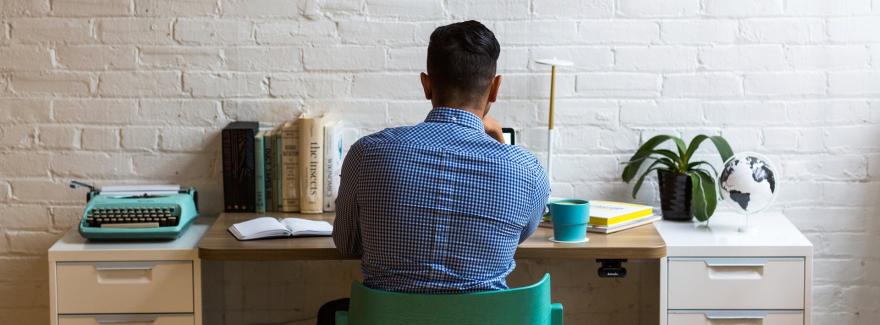
When work stations are set up properly you will be less likely to experience problems such as headaches, eye strain, neck and back pain, as well as prevent bursitis and tendon problems linked to repetitive movements.
Set up your own optimized space with these 6 steps to design a pain free workstation.
Monitor Height
Start by setting up your monitor such that the top of your screen is at eye level. This can be done most easily with an adjustable height desk or desk toper.
If a new desk is out of the question, you can always add a stack of books under your computer monitor.
Note, if you’re using a laptop, you will need to have an external keyboard to meet optimal ergonomic criteria.
Monitor Distance
The monitor should be between 18-36 inches from your eyes. A single monitor can be placed closer to the 18-inch mark whereas a dual monitor system would be best placed closer to the 36-inch position.
Blue light blocking glasses can also be beneficial to reduce eyestrain.
Keyboard & Mouse
The keyboard and mouse should be placed beside one another, at the same height and close to the front edge of the workstation.
The desk or keyboard holder needs to be adjustable in order to compensate for any necessary modifications in the wrist angle.
Desktop Arrangement
The frequently used items (pens, pencils, paper, etc.) should be placed within arms reach as to avoid excessive reaching, bending and twisting.
Chair Design
While it’s common thinking to focus on a chair with extra lumbar support, I prefer the opposite.
Similar to shoes in which too much support reduces the strength development and mobility of the feet, using support from a chair silences the spinal musculature and causes abnormal pelvic tilting.
By moving towards the front of your chair and not using the backrest, you’ll require more consistent activity of the muscle that support the spine.
Sit up tall, keep the shoulder back and down, knees bent between 90 and 120 degrees and position your feet on the floor or foot rest.
To Sit or Stand: That is The Question?
There is potential for a standing workstation to be a better option than sitting, although some of the research gives us conflicting information depending on what parameters are being measured.
Some of the advantages are:
- Reduced Leg Weakening
- Less Hip Flexor Tightening
- More Glute Activity
The final advantage and the main reason why a standing station could be a great choice, is more overall movement.
When standing, it’s more likely you’ll be inclined to move versus while working from a seated position.
How much you move, regardless of a sitting or standing desk, is a determining factor for which choice is the healthier one.
Either way, taking micro breaks is very important.
Getting up and walking around for 10 minutes at the end of every 30-60 minutes can make a world of difference over the course of long days, weeks and months working away in front of a computer.
Have you set up your pain free workstation?


